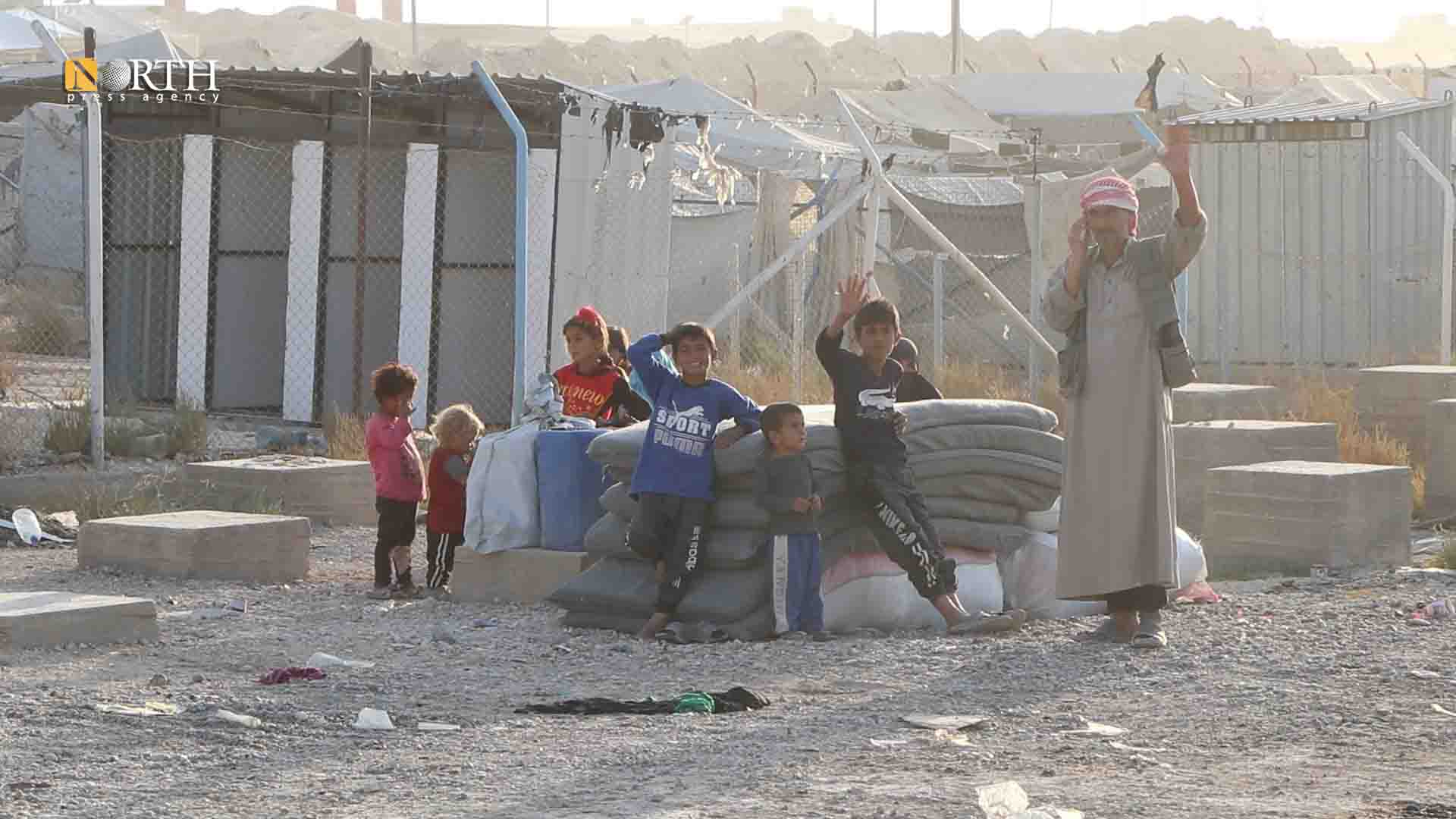HAWL, Syria (North Press) – The Autonomous Administration allowed the exit of many displaced people in Hawl Camp as part of an initiative launched in June 2019, a month after a tribal conference was held in Ain Issa district.
Hawl Camp includes the largest number of women and children of ISIS militants from Syria and Iraq, whose number reaches about 11,000, according to the camp administration.
As the sunset approaches, Abboud Ali, a Syrian IDP in Hawl Camp, zealously packs his family’s belongings in a dusty car.
He is waiting in the reception square for tomorrow’s sunrise, wishing that it will be the last time he sees the sunrise in the camp.
Just a few paces away, his brother Khdair al-Ali calls one of their relatives and tells him that they will leave the next day.
Abboud had packed his luggage in white bags and sealed them tightly, and the luggage was nothing but the aid that he had received during his stay in Hawl Camp, east of Hasakah.
Behind Abboud and Khdair, a group of women cover their faces with a black veil, refusing to speak to the press, content with saying: “Thank God, we will go out.”
Two years ago, Abboud lived with his wife and eleven children in the camp, but starting tomorrow they will have a new life.
The two IDPs are from the village of al-Boubadran in the city of Susah in the eastern countryside of Deir ez-Zor.
“The war brought us to the camp,” says Abboud. “For two years, my family and I have been staying here.” He had joined his family in the camp after coming from Lebanon.
Hawl Camp is home to over 20,000 Syrians who have been displaced from several regions of Syria as a result of the years-long wars in the country.
Khdair still remembers when he and his family of eight left their home more than two years ago.
At that time, ISIS was on the outskirts of his village, al-Boubadran. The two brothers will leave under a tribal guarantee approved by the camp administration about a year and a half ago, and they will be in the 27th batch leaving the camp.
According to the camp administration, the new batch includes 73 families consisting of 289 people, most of whom are from the Deir ez-Zor countryside.
“We are very happy to leave the camp and return to our homes,” Abboud says.
His younger brother Khdair says, “We are about to leave the camp and are happy that we will return to our homes and lands to work in agriculture.”
The two brothers said they were lucky that their homes were not destroyed despite the violent battles that took place in their area.
Although the departure time will be on Monday morning, the reception yard within the camp is gradually filling up with IDPs eager to return to their homes.
Salah al-Ali is preparing to return to Mayadin, his hometown, which he has not seen since February 2018. Currently, Syrian government forces control the city of Mayadin, west of the Euphrates.
The IDP recalls his journey of displacement, in which he crossed several stations: “We moved from Mayadin to the village of Buqors, and then Hawaij and Tayyanah, which was not spared from the bombing.”
Then he had to go to the town of Abu Hardoub to stay there for about two months, before leaving to Hawl after the intensification of the bombing.
Salah added, “Tomorrow we will return to Mayadin; we are very happy and I am not afraid to return to regime areas because I did not belong to any faction.”

